A while back (ok, a long while back), I went on a bit of a circuit around the US and visited a number of companies. One of those was Quarq. As long-time readers know, I occasionally do Behind the Scenes posts on various companies in the industry. With it being the quiet period here prior to spring, I figured I’d break out some of that goodness, starting with Quarq.
I think there’s a fascinating amount of stuff that goes into building a product that’s fun to share, and provides more insight into how companies operate (both good and bad).
As with all of my ‘Behind the Scenes’ posts, I cover all my own travel expenses to visit these companies. So, if you find them interesting, your support and awesomeness via a variety of methods is always appreciated (see the sidebar).
Located in the middle of…
…nowhere. That’s approximately where Quarq is. Actually, the longest Interstate Highway in the US from Seattle to Boston (I-90) goes directly by it. So you can see all of America on one drive – including a power meter manufacturer.
Simply take Exit 14 and then turn at the Applebee’s, look for Walmart, and you’ve arrived.
But no matter where you’re located in this grand world, there’s still no place like home:
The additional benefit to being located away from cities is the beauty of it, which lends itself well to riding. And as a bike industry company – that’s what you’re really looking for. Plus, as I saw during my visit, it snowed in the morning, and was t-shirt weather by afternoon. Perfect for temperature compensation testing.
An impressive number of employees either commute by bike, or have bikes on hand for lunchtime rides, as seen in one of their entryways.
Not surprisingly, I’ve found this to be the norm at bike companies the world around. And like others, they have a small array of cycling memorabilia and art in around the office. Quarq, as an entity that’s part of SRAM, is pretty involved in ArtCrank, one of the best known cycling-focused art entities out there. You can often find artist’s work available for auction to benefit various non-profit causes related to cycling:
But for the most part, it’s a rather subdued office. It lacks the famous jerseys of the now-defunct LeMond Fitness location near Seattle, or the impressive gallery inside Specialized. Yet, I think it’s kinda what sets Quarq apart. They tend to be a bit more humble than others – and this shows.
And since the above is the sum total of the non-gadgetry portion of Quarq HQ, we’ll get right into a bit of geek fest.
Research and Development:
Like any company, Quarq is pretty much constantly at work on next generation products. When I visited, they were still in trials of the Quarq Race Intelligence system, but also preparing what would become the Riken AL. While both are on the main stage these days, the Race Intelligence is still very much young as a platform. But, one I fully expect to expand over time given the huge potential as event organizers realize how to market it.
Much of the non-coding work of these products occurs just up the hill from the main manufacturing plant, in another nondescript building that overlooks the valley (and Walmart) below.
Inside you’ll find a vast array of machines and equipment that would make any geek drool. Especially those with a penchant for machine shop.
For example, we (just like the power meters themselves) can start with this CNC machine, which is literally cutting the power meter bodies from these apple pie sized chunks of aluminum:
Here’s those apple pies:
Here’s what it looks like through a few of the steps. Totally automated:

And a couple of quick pics within that process:
After they are machined they are then anodized, which is done outside of the facility and then returned back to Quarq.
They’ve also got this wireless test chamber, which allows them to test wireless signals (i.e. ANT+) in an automated manner from different directions. The crank-arm will actually spin, just like in real-life on a bike.
In case you’re wondering – they actually purchased it on eBay, and then had to figure out how on earth to get it to South Dakota. Thankfully, the seller agreed to transport the beast. Or rather, Jaws.
Meanwhile, a dedicated clean-like room (with different entry requirements) is setup for a machine that laser-validates both the various components produced within the factory, as well as those from 3rd party suppliers.
The unit is effectively a tolerance checker. Oh, and it’s measuring a deviation of .0014mm on this specific pass.
For me though, the most interesting room was the one next door. It’s here that the company beats the crap out of products and validates various aspects such as load and force. For example, the below home-built rig allows quick validation against a known weight (something common among folks that want to validate calibration on a power meter):
There are four of these machines here on just this one side of the room…in case you’re bored on a Monday afternoon:
However, there are other similar units with abilities to test additional functions, such as stress and fatigue. This particular rig is running the power meters through a specific ISO certification aimed at cycling, via ISO 4210-8 (exact details here, in case you were wondering).
And then there’s my favorite – which is the fully automated pedaling machine. They can turn this on and have it run for as long as they want, giving a defined load and testing pattern:
Oh, and they can also change the gear. I think they were a bit proud of their mini-Di2 setup. They noted they’d be looking to convert it to SRAM RED eTap, however, as of current it’s still slumming it on Di2. I inquired this week as to the reason: “All the eTap goes to paying customers!”
And if you want to test 18 spiders at once, there’s a machine for that too.
Same goes for waterproofing tests, also possible via this test chamber:
(At this moment, I’d like to remind you this is all just the R&D warehouse, we haven’t even got to production facilities yet).
Need to change out the chainring for a test? No problem. Here’s a few to pick from:
While almost everything R&D focused occurs in the hill-side building, there are certainly cubes available for work that doesn’t require sitting in front of a piece of machinery named ‘Jaws’:
For most of those workers, this sign is more appropriate:
As is the small cartoon located above some test equipment – something I’m sure many RF engineers will appreciate:
Of course, not all products make it to market. For example, check out these two goodies from the olden days. It was the original Qranium and another attempt at a Quarq head unit:
But some do. After all – this is one of the original prototypes of a Quarq power meter:
While that may seem crazy looking, it’s actually very much in line with how power meter prototypes are made today. I’ve ridden numerous units that looked pretty similar to that (albeit slightly less boxy – but sometimes still with plastic wrap). It’s the way engineering works – start ugly, and then refine to a consumer product.
How to build a Quarq PM in 13 Easy Steps:
So, you want to build your own Quarq? No problem – let’s walk through how exactly you do that. It’s a multi-step process that I was able to walk through each component. To begin you’ll need to take one of those chainrings that we saw machined in the previous step by the crazy automated machine. I’m considering that piece a pre-curser, since this is all about assembly.
One of the big shifts that Quarq made about 3 years ago was a move to be fully ISO9001:2008 compliant. As a result, they brought in someone that was pretty deep into the manufacturing world. Said differently, they brought in the mother of all process dudes. His job was to tighten up the manufacturing line to produce more reliable and repeatable production. Every piece of the below build process now has a specific QA (Quality Assurance) plan, as well as a specific validation test.
Again, none of that is terribly surprising to most familiar with manufacturing, but the specific timeframes help to provide context for some pieces I’ll dive into later on QA issues in general with older Quarq units.
Step 1: Laser Etching the ANT+ ID
First up is getting the ANT+ ID assigned to a piece of hardware. In the Quarq world, the ANT+ ID is the serial number, and is essentially its social security number. You can see the spider in Jim’s hand there, prior to loading into the machine.
The machine then uses a turntable to automate the etching of 6 units in serial:
This seems like a good time for a quick video – so here’s the laser etching:

Ok, so it looks cooler in person.
Step 2: Strain gauge gluing:
During this step, they take the spiders and then glue the strain gauges on them. As with every power meter manufacturer I’ve visited, this is considered pretty secret stuff – and thus I was unable to take photos of this. The reason it’s considered so secret is that the exact details of how you glue a strain gauge on can make the difference between accurate and non-accurate results.
While other major competitors have figured this out, these companies want to limit newcomers from just picking up their secrets and saving months or years of trial and error.
Step 3: Circuit Board Installation:
Next, it’s time to install a circuit board. This is the piece where they add the communication chipset (e.g. ANT+ connectivity), as well as other internals that allow computations.
Step 4: Medusa – First Electrical Test:
In this test, using a system they’ve affectionately named Medusa, the units are quickly tested to a first pass of baseline functionality. Calibration does not occur at this step.
Step 5: Cover plate added, filled with molding material:
Here they go ahead and add the cover plate that acts as the outer shell. In addition, they add in a molding material that helps to waterproof the unit.
Step 6: Decals & battery compartments added:
Next, they’ll install the Quarq decals, as well as add the battery compartment components.
Step 7: Waterproof & Radio test:
Then comes a 20-minute bath inside this uber-expensive Rubbermaid container. This is a simple waterproofing test using real water (some companies will use a pressurized air system instead).
After its dunk, the unit goes into another chamber to test the communications stack, and ensure it has consistent and strong signal (across the entire rotation). This is important so that your ANT+ head unit can pick up the power meter data stream.
Step 8: 10K Point Thermal Test/Calibration:
From there it’s off to the sauna for the 10,000 point calibration that Quarq has publicly talked about a fair bit. This calibration procedure tests and sets how each individual unit responds to a temperature range from 0°F to 140°F.
It takes 2.5 hours for this entire test sweep to complete, which occurs inside this gigantic oven-like machine. At this point in the test, it was going through 129.6°F:
Step 9: Prepare for finishing:
At this point the units are functionally complete. Depending on what someone orders, the exit process will differ slightly. On these racks, there are blue buckets for each type of power meter coming off the line. Think of a single blue bucket as a Pringles can, with a pile of power meters lined up neatly inside it in a row.
Step 10: Chainring & Crank Arm Install:
Like a Dell computer, you’ll order your power meter with a specific configuration. They build most products to order (though try to keep enough inventory on hand for any combination). It’s during this step that they’ll affix whatever your preferred components are:
Step 11: Calibration check:
Next, it’ll get put on one of the automated machines for a 5-minute calibration test. This ensures that it passes all tests as a fully functional power meter before heading out the door:
Step 12: Boxing time:
Next up the units get boxed up. You can see a single plastic container for each order.
Oh – and if you’re a warranty customer, you’ll also get a free water bottle in your box. And, if you ask during the customer service call, they’ll happily send you a free t-shirt too. However, they can’t send them on international warranties due to customs tax issues. Sad panda.
Step 13: Shelf & Ship:
For their most popular unit combos, Quarq will stock those ahead of time, which will sit on shelves until they head out the door.
Meanwhile, everything else gets ready for shipment out into the wild blue yonder:
And a few days later, it’ll find itself at your doorstep.
Customer Service & Support:
There’s a bit of a long running joke in any power meter thread regarding Quarq’s customer service reputation. It notes that while Quarq’s customer service is probably the best in the entire sports technology industry (friendly people, easy to reach, accommodating, quick to act), it’s that athletes wish they didn’t have to use it so often.
That perception, and the reasons behind it was a key part of my conversation during my visit with them. I was curious to know what, if anything, had changed that might reduce that perception. To begin though, a brief understanding of what happens when you call Quarq with a support issue. First off, you talk to someone in this small row of cubicles. They all have window seats – about the only window seats in the building.
Just beyond the windowsill is the mother lode of bike parts. These are essentially quick reference units of everything from chainrings, to Quarq PM’s, crank arms, to bottom brackets.
This allows one of the handful of customer service folks to run over to the rack and grab whatever part you’re talking about. This is pretty common in any customer service call center dealing with physical goods, but it’s still pretty cool to see all the parts lined up on someone’s desk.
The first thing they’re going to do after saying hello is to get your Quarq serial number (which is just the ANT+ ID). For fun, we took the Quarq Riken in my review (which is mine), and decided to look it up. Since I didn’t bring it with me – we just pulled my ANT+ ID number off of the In-Depth Review page:
Next, you’ll see the complete history of that unit on the right side of the screen (above to right). This tells the full life story of that power meter from build to ship. In my case, it was forwarded off to SRAM Netherlands before being shipped to me (to simplify logistics). What’s really interesting though is to see all of the iterations of tests that the unit went through. In fact, you’ll notice that my unit initially failed two tests coming off the line.
However, you read up in the source, and it went back through to ‘re-work’, and was addressed and re-tested prior to going back out. We can actually see the two line items within the test that it failed, and that after re-work those were addressed.
But it gets cooler (no pun intended). One can actually lookup the temperature tests that were done, and look at the exact plots for each and every power meter that went through that chamber:
This is somewhat like having a black box of every power meter going off the line, so that down the road if there is some oddity that starts becoming a trend, they can figure out why. In fact, in many of the steps along the way in my ‘Easy steps to building a Quarq’, it’s recording data for that unit that’s available for lookup during a call potentially years later.
And that’s where the conversation turned to addressing Quarq service rates. Which, I should first point out that like any internet forum is always something where 100% of unhappy people complain, and about 1.5% of happy people say so. So everything is always unbalanced.
Still, there’s no benefit to Quarq in having to deal with a service issue/swap. It costs them money and causes an athlete issues. So every single power meter that comes back for any reason is torn-down to figure out the offending issue. Every unit. From there, they do trending, which ultimately allows them to start addressing issues.
For example, back about 3-4 years ago they had more issues with units giving sporadic power readings. As they started tracing that down with returned units they found water ingest as a frequent cause. Many may remember my now somewhat infamous original Quarq Cinqo water ingest accuracy issue that manifested itself during a mountain ride as part of another power meter review. That was three years ago, on a unit from ~6 years ago.
Through more investigation a fair majority of those cases (including mine which they tore down) came from the simple battery cap system. They spent boatloads of money re-designing the battery cap. One might think that’d be straightforward, but finding the right balance between something that was easy to twist off (threaded) but didn’t have the threads fail or folks over-tighten proved to be challenging. All units now though ship with the improved battery pod system, which has dramatically cut down issues.
But that’s just one example. While they showed me a listing of all the root causes, I wasn’t permitted to take a photo of it. It was fascinating to see though, and each component that was changed/addressed to fix it and when and where those fixes were implemented from a timeframe standpoint. It was clear though that in the 2-3 years ago range is where there was a steep drop/focus on addressing returns.
I think Jim Meyers (founder of Quarq) summed it best when he said (paraphrased): ‘When you build 100 power meters, you think you know it all. Then you build 1,000 and look back and realize how little you knew at 100. Then you build 10,000, and realize how little you knew at 1,000.’
Any good company will aim to always better their products and learn from it – and I think that’s what every consumer ultimately wants from a company. You want one that stands by existing products in times of service/support, and at the same time to be working on how to tweak/advance the product in newer generations. And in turn, I think we’ve seen Quarq do a pretty good job of that over the last few years.
—
Thanks for reading all! And be sure to check out the rest of my ‘Behind the Scenes’ posts!
FOUND THIS POST USEFUL? SUPPORT THE SITE!
Hopefully, you found this post useful. The website is really a labor of love, so please consider becoming a DC RAINMAKER Supporter. This gets you an ad-free experience, and access to our (mostly) bi-monthly behind-the-scenes video series of “Shed Talkin’”.
Support DCRainMaker - Shop on Amazon
Otherwise, perhaps consider using the below link if shopping on Amazon. As an Amazon Associate, I earn from qualifying purchases. It doesn’t cost you anything extra, but your purchases help support this website a lot. It could simply be buying toilet paper, or this pizza oven we use and love.










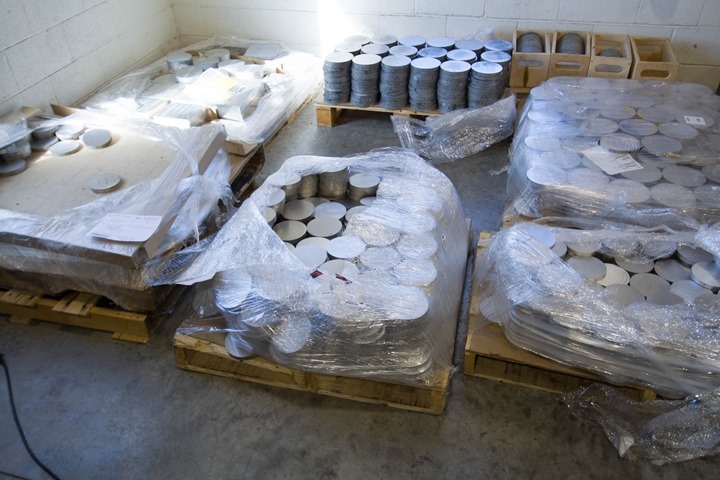


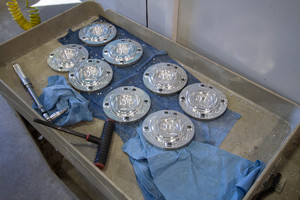
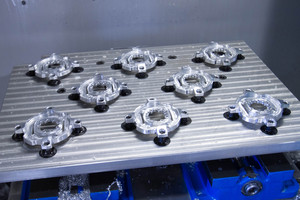
























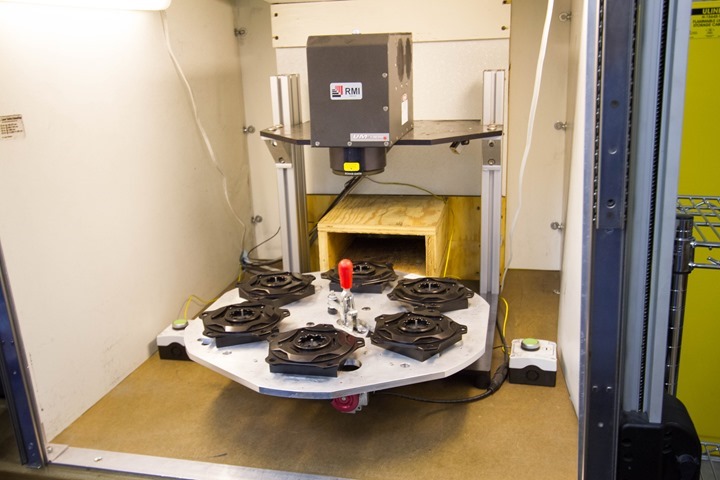


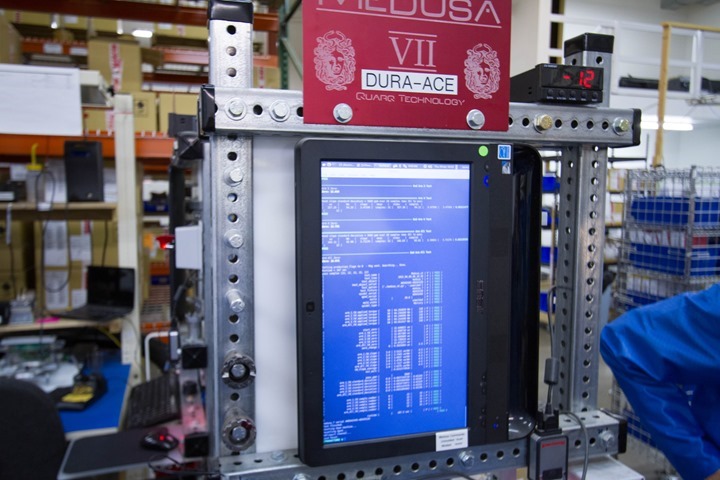








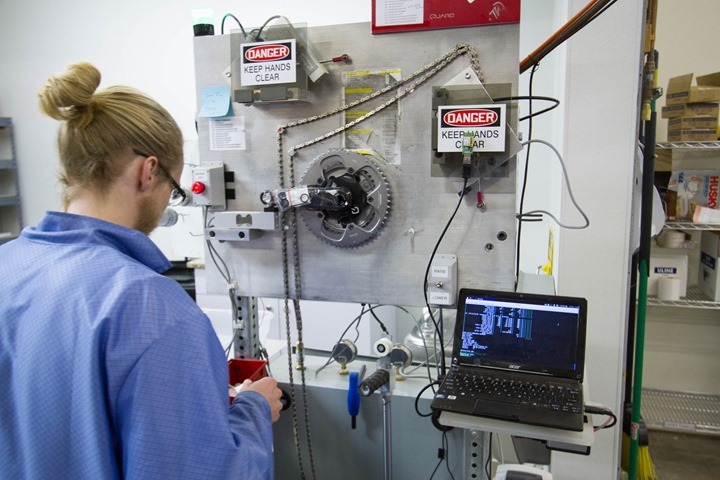






























Four-arm spider powermeter – please!
I’m pretty sure the Elsa RS is a four arm, 11sp shimano ring compatible crankset.
Sorry – You are right!
Thank you Ray. I’ve been waiting for this post since your first report on your visit to Quarq! I enjoyed reading it. I have a Quarq powermeter and I absolutely love it! No problems whatsoever.
Same here – mine just seems to keep working :)
Thank you Ray!
Your behind the scenes reports are always very interesting, no matter which company you choose to visit.
Also, I am seriously wondering which project you might have in your head at the moment that might blossom into a business venture one day, as I am sure there must be something. Combined with your tech and practical know-how, it should be fun to follow !
have a nice day
I’ve got a few more than should be fun. I think I’ll knock out the Specialized Wind Tunnel one for next week or the week after. That’s packed full of data as we tested a crapton of gadget devices (action cams, mounts, bike computers) on the market in an all-day-testing extravaganza.
This is were the SRM powermeters are having extra value
a comparison on the production process justinfying the COGS
Great article Ray, thanks for posting
Reminds me of the Limits power meter factory tour I had last month ;)
Great review, I love seeing this kind of stuff. Now I understand why these power meters are so costly…top notch company for sure, I’m impressed!
When I saw the opening photos, middle of nowhere location, read about the “Walmart valley”… I initially thought the opposite: Quarq products it should be much cheaper!
Seeing the focus on trending analysis and quality is no doubt a hidden value built into the final product.
Hi Ray
small comment: I think the picture from the measurement is not showing a deviation of .0014% it is showing a deviation of .0014mm or inch, depending on the dimensional unit they use.
Thanks for the inside view I enjoyed reading.
We live in metric, so the deviation is 0.0014mm (1.4 microns).
Jim
Very interesting. What’s the merit of having a calibration weight on a chain compared with fixating the chainring and hanging the weight in place of the pedals (maybe with an adapter if you want to have the weight on the same plane as the chainring)? I wouldn’t want to have to count the chain links to calculate their weight – or am I missing something?
Well okay …. it guarantees horizontal distance of weight from rotational axis, although that has to be measured or calculated once, and, by measuring two data points, one with just the chain, the other with chain and weight, they don’t actually have to count chain links. Two data points are still less than the many data points taken while rotating the crank slightly to ensure you get the data point corresponding to a horizontal crank alignment … so I see it really could make sense overall … which makes me think whether I should adapt that instead of hanging a calibrated weight from the pedal for calibration at home…
Not sure if they are still sending water bottles to warranty customers. I just had a warranty return (excellent customer service), but didn’t get a water bottle. I’m not at all butt hurt.
Hey Matt, email us here at Quarq and we’ll get you taken care of. thinkfast@quarq.com.
Hi Ray,
I just checked clever training and I’m surprised you didn’t note that the Riken AL is on sale for $705! Not sure if the DCR discount would work, but that seams like a really solid deal.
Interesting, I hadn’t noticed that. Looks like just the 172.5m BB30 Riken AL*. Still, a pretty solid deal.
Linkage: link to clevertraining.com
*I have no idea why that very specific one and not the others. However, I did check and the discount code does still work, bringing the total down to $634 with free US shipping.
Gives me a better perspective to answer that age old question: “Why are power meters so expensive?”.
Exactly my thoughts.
This was a phenomenal article. Thank you.
“Slumming it on Di2” was easily my favorite line as well.
The comic at the RF engineering stand was this XKCD: link to xkcd.com
Spearfish SD is close to a lot of really interesting things- the cliches of Sturgis and Rushmore, but more importantly only 100 miles away from Badlands (and the same distance from the poorest zip code in the USA).
Thanks for the post Ray!
Another reason to love my Quarq even more!
Crazy to see this then bitch about the price of power meters. What a process!
Great article, love seeing this type of post. Getting to see the work that actually goes into stuff and not just glossy promo shots etc. They look like they have their stuff in order. I would have no issue buying from them after seeing this article (not that I did before).
Ray,
Talk about timing!
I recently purchased a new frameset without doing any background as to what components would fit it. My bad… In any case, this new frame uses a BB386 EVO, which Quarq does not currently make anything to fit. *Contacted Quarq directly, and they did send me a whitesheet, showing how a European team mounted a Quarq in a Swift carbon with BB386, and what BB30 they used, along with spacers, to make it fit. However, I was informed that Quarq is NOT currently researching the manufacture of products to fit the BB386 EVO.
Unfortunately, several websites, local bike and tri shops, and the distributor of the frame cannot agree if a Quarq would fit and clear everything once in the new frame. My semi-panicked focus has immediately turned to PM’s that would be functional with the BB386, without numerous spacers and the sort. This is a limited field, but Rotor is the taking the lead of my available selections.
My dilemma is all current history of wattage is logged in GC/TP/WL using a Quarq, and switching to Rotor will require me to do same-ride/side-by-side watt output comparisons to carry forward any variances between the two PM’s.
Having never used Rotor before, I’ve used your blog and other sites to collect feedback on the product. They all favor the product, which then tosses me into the WIDE array of assembly you can build within Rotor. Flow Cranks? Q-Rings? InPower? Solo or a combination of all 3? Ack!!!
So after much research through your blog, and the wealth of information it contains, I have drilled it down to one of the following 4 options
1) Currently using Keo pedals, I can use the Rotor Flow crankset with P1 pedals, allowing for left/right readings (left leg issue, from car/bike accident) and use the P1’s on Road, and potentially Track bikes in the next several seasons
2) Go with Rotor Flow Inpower PM, using my standard Keo pedals
3) Take the risky route of purchasing the Quarq for a BB30, confirming I order/receive the long stem, and use spacers on each end to fit the BB386 EVO
4) Go back to RPE, let my coach go, and take a decent vacation on the $$ I save by not buying any form of powermeter
Wide open to your feedback, along with shared knowledge from the Peanut gallery.
Fellow Seattle-ite!
Great BTS write up! And, I had no idea they were in Spearfish! I went to college there and hopefully, you got to spend some time in Deadwood.
I’d own two or three RS units if they came with BLE support in addition to ANT+. Not that there is anything wrong with ANT+ per se, just that companies other than Garmin seem innovating lately, and at these price points I’d like to have options.
I own two Quarq power meters (Elsa RS and Riken AL). Quarq provided excellent pre-sale (when i was checking if the Riken AL was compatible with my cross bike) and post-sale support (warranty support for the Elsa RS).
Fascinating to see such a utilitarian aesthetic in a work environment. Maybe says something about South Dakotans culture and values, or their tolerance for distraction… compared to the coastal big-city companies.
Maybe one can of paint wouldn’t kill them though?
My second-hand Quarq Riken has been totally solid through a road season and then a cross season. Quarq switched crank arms (BB30 to GXP) for me at no charge, and were very friendly and communicative about it. Very impressed with their customer service, and they sent me a water bottle to boot!
Very cool write up. I have two Quarqs and seeing where they came from is great.
Jim’s last quote about building powermeters make me rethink my choice of maybe being in the first batch of the Brim Brother’s Zone DPMX. While I have no doubt they are a serious company it’s still a startup so I have fears about long term support and how problems (if any) will be managed.
What is your take on that point Ray ? Thanks
On one hand, I think with more and more PM companies out there, they’re learning from each other more than Jim could have back then. When Quarq started 10 years ago, it was basically them, SRM, PowerTap, and Ergomo (and Polar with a chain based unit). So the field was highly limited in terms of what to learn from.
Now, there’s 15-20 power meter manufs working on products (not all released). Obviously we have data points along the way with Brim Brothers, and will very shortly have more data points. I expect like Quarq though, there will certainly be lessons they learn. The question is whether or not those lessons impact the end user accuracy (or the experience substantially). For that we’ll have to see.